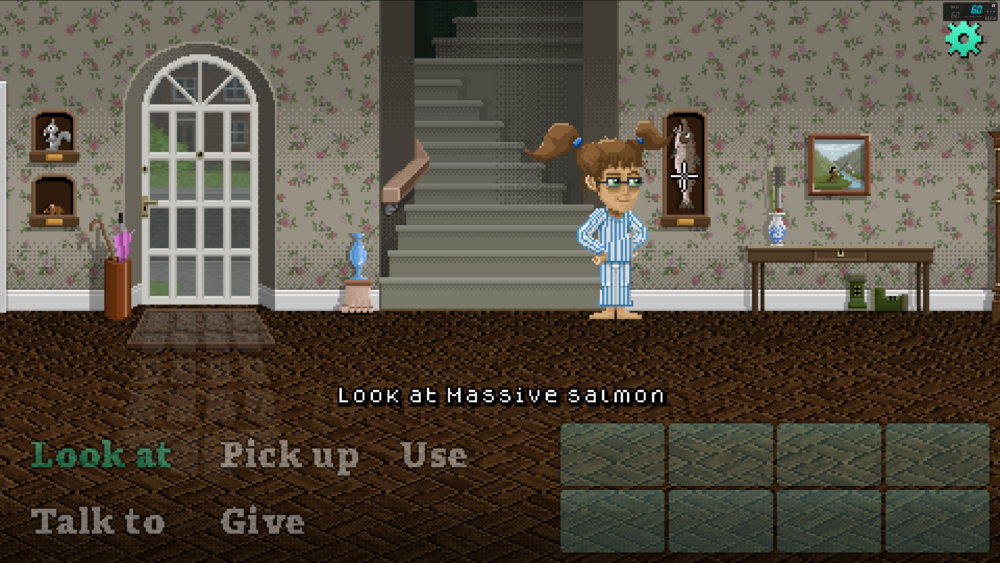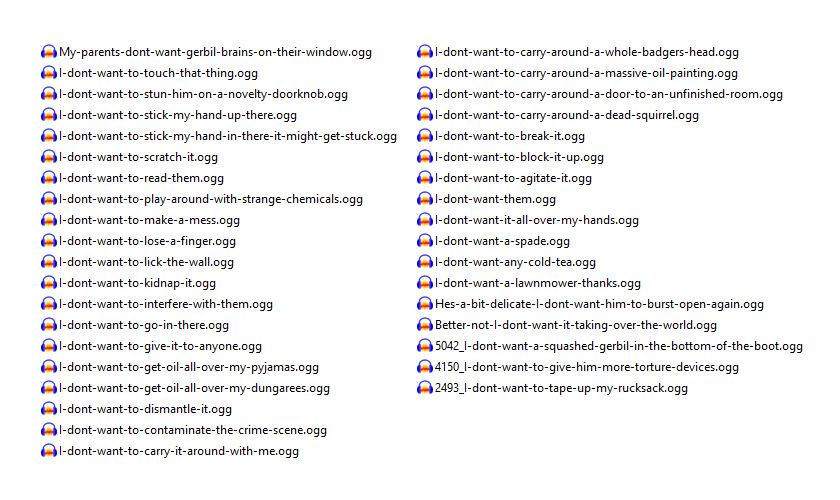Where are we now?

A lot of my previous posts have been opinion-pieces about my approach to game dev and storytelling, which is all well and good but I wanted to post an update about where the demo is currently up to. I’m not a patient man and I always want things finished immediately, but a few weeks ago when I’d mostly finished building the demo, I decided to add a lot more.
What’s the demo for?
After an initial poll at the start of this project I decided to create a mini-episode to represent the full game. So rather than being a small portion of the actual full game with little context, it’s a mini game in itself – it’s also going to act a bit like a prequel, which players of the full game can go back and play retrospectively if they want to, without knowing all of the puzzles already.

The main characters and scenes within the demo will remain more or less the same as in the full game, but I wanted to get a few fundamental mechanisms into the demo that explain how the full game will work, without too many spoilers.
I hope it isn’t spoiling too much to say that the main mechanism of the full game will be the ability to travel in and out of different dreams, to ultimately cure Lucy of her recurring nightmare. The demo will introduce this concept, and provides an example of how this affects things like the character’s inventory and ability to solve puzzles between dreams and reality.
With this in mind, I have created a dream sequence in the demo which I don’t intend to include in the full game if/when it comes to fruition. It’s relatively simple, and serves to demonstrate the functionality above along with the style, tone and humour of the game without being too long-winded.
Making work for myself
I wasn’t initially planning to include voice overs in the demo, and was just going to upload a couple of video clips with sample voices when crowdfunding to explain how they would sound – then include these in the initial funding goal, or as a stretch goal.
The problem was that when I imported the voice over files, it made such a huge difference to the game that I found it very difficult to go back to a text-only version.
So, even though the demo design and build is essentially complete now, I am sourcing voice overs and including these in the demo too.
One of the things I really want to do with my game is reward the player for simply exploring, and provide a bit of light relief when there may be frustration over an unsolved puzzle. For this reason I have added a lot of interactive areas and objects within each scene, and also added custom responses for nearly all of them too. I know it’s a detail that creates A LOT more work than including only vital objects for the puzzles/narrative and relying on the “That doesn’t work.” method, but it’s important to me that the personality and humour of the game is embedded into every aspect.

Unfortunately, this has put me over an rather large barrel, and I now need to deliver these thousands of responses (most of which may never even be read/heard) in both speech and text form.
I did a quick count up of the words that the main character has to say, and there are already over 8,000 of them!
Text is easy – I can write lame jokes all day long.
Speech is slightly more problematic – I need to record, organise, lip-sync and import literally thousands of separate audio files for the demo.
This is potentially very expensive and definitely very time-consuming.
So, where am I up to?
Here’s a run-down of what’s done, and what’s still left to do for the demo. It’s so close now!
- Planning – Done.
- Writing – Done
- Design – Done.
- Structural dev – Done.
- Music – Done (although I may add more custom tracks if I can find any money down the back of the sofa).
- Voice overs – 95% done.
- Testing – Still to come. If you would like to be a tester for the demo, you can sign up here.
- Getting my shit together for Kickstarter – Still to come.
- Launch!
More updates to come!
Back to blog